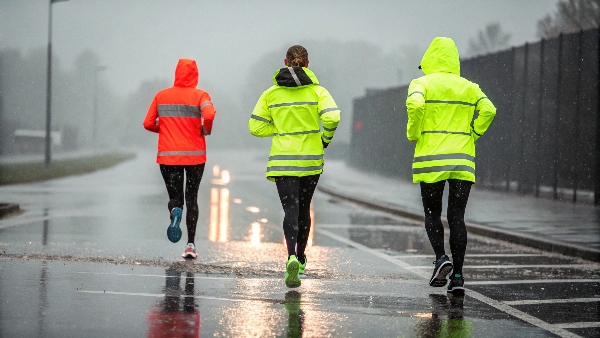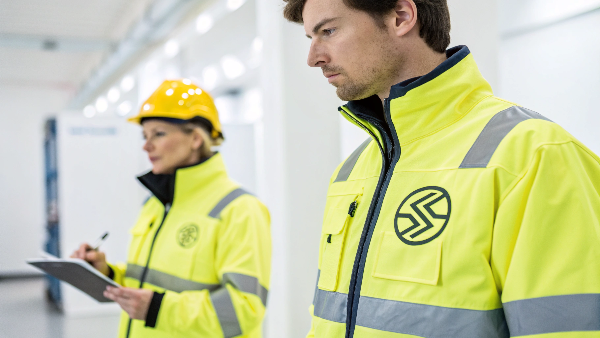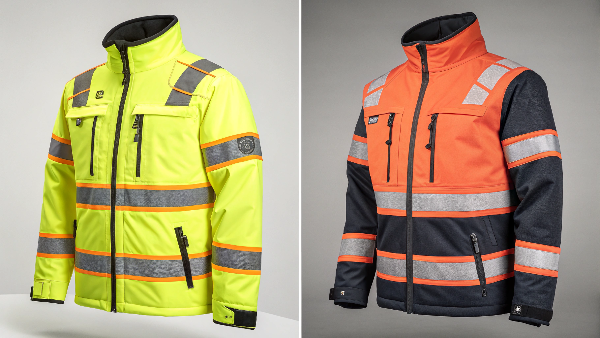Imagine this: You're a production manager overseeing a bustling factory floor, or perhaps you're an office buyer responsible for ensuring the safety of hundreds of employees. One day, you receive a distressing call—an employee has suffered a severe injury because they weren't wearing the proper protective gear. The ramifications are immediate: halted production, potential legal action, and a dip in employee morale. The scenario is all too real and highlights a critical issue that many businesses face: inadequate use of Personal Protective Equipment (PPE).
Now, let's agitate the problem further. This isn't just a one-off incident. Without the proper use of PPE, your workplace becomes a ticking time bomb, waiting for the next accident to occur. Injuries can range from minor cuts and bruises to life-threatening conditions, and the consequences can extend beyond physical harm to legal battles, financial losses, and a tarnished company reputation.
But there is a solution, and it starts with understanding the importance of PPE. By prioritizing the correct use of PPE, you can create a safer work environment, ensure legal compliance, and boost overall productivity and morale. In this article, we will delve into what PPE is, why it is so crucial, and how to implement its use effectively in your workplace.
What is PPE, and Why is it so Important?
Personal Protective Equipment (PPE) is any equipment or clothing worn to minimize exposure to workplace hazards that could cause injury or illness. PPE includes items such as safety helmets, gloves, eye protection, high-visibility clothing, safety footwear, and respiratory protective equipment.
Protection from Hazards: PPE serves as a barrier between workers and potential dangers in the workplace, including physical, chemical, biological, or airborne agents. It helps prevent injuries and illnesses that could result from exposure to these hazards. For instance, high-visibility clothing can prevent accidents in low-light conditions by making workers more noticeable.
Legal Requirement: In many countries, employers are legally obligated to provide appropriate PPE to their employees free of charge. This ensures that workers have the necessary protection to perform their jobs safely. Non-compliance can result in hefty fines and legal repercussions.
Last Line of Defense: When hazards cannot be eliminated or reduced through other means, PPE acts as the final layer of protection for workers. This is crucial in high-risk environments where other safety measures may not fully mitigate potential dangers.
Improved Workplace Safety: Proper use of PPE can significantly reduce the risk of work-related injuries and illnesses, creating a safer work environment. This not only protects employees but also promotes a culture of safety within the organization.
Increased Productivity: When workers feel safe and protected, they are more likely to be productive and efficient in their jobs. A secure work environment fosters confidence and focus, allowing employees to perform at their best.
Compliance and Reputation: Providing and using PPE demonstrates a commitment to workplace safety, which can improve a company's reputation and attract new customers and clients. A strong safety record can be a significant competitive advantage in industries where safety is paramount.
Versatility Across Industries: PPE is essential in various sectors, including healthcare, construction, food industry, and manufacturing, protecting workers from industry-specific hazards. Each industry has unique risks, and PPE can be tailored to address these specific challenges.
Pandemic Response: The importance of PPE has been further highlighted during the COVID-19 pandemic, with increased usage to protect healthcare workers and the general public from virus transmission. PPE has become a critical component in managing public health crises.
In conclusion, PPE plays a vital role in protecting workers from potential harm, ensuring legal compliance, and promoting a culture of safety in the workplace. Its importance extends beyond individual protection to impact overall workplace productivity, employee morale, and company reputation.
When Should PPE be Used in the Workplace?
PPE (Personal Protective Equipment) should be used in the workplace in the following situations:
When Hazards Cannot be Eliminated or Adequately Controlled Through Other Means: PPE serves as the last line of defense when engineering controls, administrative controls, or work practice controls are not sufficient to eliminate workplace hazards. For example, in a construction site where falling debris cannot be entirely prevented, hard hats are essential.
After Conducting a Hazard Assessment: Employers should perform a thorough evaluation of the workplace to identify potential physical and health hazards that require PPE. This assessment helps in determining the specific types of PPE needed for different tasks and environments.
In Specific Hazardous Conditions: PPE is crucial in environments where workers are exposed to harmful substances (chemicals, biological agents, etc.), risk of physical injury (falling objects, sharp edges, etc.), extreme temperatures, loud noises, harmful radiation, and respiratory hazards. Each of these conditions requires specialized PPE to ensure adequate protection.
In Compliance with Industry-Specific Regulations: Certain industries, such as construction, manufacturing, and healthcare, have specific PPE requirements mandated by regulatory bodies like OSHA. Compliance with these regulations is not only a legal obligation but also a best practice for ensuring worker safety.
During Tasks that Pose Potential Risks: Even for short-duration tasks that may seem low-risk, PPE should always be worn if there's a possibility of injury or exposure to hazards. For instance, wearing safety goggles during a quick welding task can prevent severe eye injuries.
When Working with or Around Heavy Machinery: To protect against potential injuries from equipment operation, such as crush injuries, amputations, and other serious incidents, PPE like safety shoes and protective gloves are essential.
In Food Industry Settings: PPE is used to prevent food contamination and protect workers from burns, cuts, and other occupational hazards. Hairnets, gloves, and aprons are common PPE in this industry to maintain hygiene and safety standards.
During Pandemic Situations: As demonstrated by the COVID-19 outbreak, PPE usage may increase significantly to protect workers and the public from infectious diseases. Masks, gloves, and face shields became ubiquitous during the pandemic to curb the spread of the virus.
It's important to note that PPE should be used in conjunction with other safety measures, not as a substitute for them. Employers are responsible for providing appropriate PPE free of charge, ensuring it fits properly, and training employees on its correct usage and maintenance. Regular reassessment of workplace hazards and PPE effectiveness is also crucial to maintain a safe working environment.
Why is it Important for Employees to Wear PPE?
There are several important reasons why employees should wear personal protective equipment (PPE) in the workplace:
Protection from Hazards: PPE serves as a critical barrier between workers and potential workplace dangers, including physical, chemical, biological, and airborne hazards. It helps prevent injuries and illnesses that could result from exposure to these risks. For example, respiratory protection can prevent lung diseases, while eye protection can prevent vision loss.
Legal Requirement: In many countries, employers are legally obligated to provide appropriate PPE to their employees free of charge. By wearing the provided PPE, employees help ensure compliance with workplace safety regulations. Non-compliance can lead to legal actions and financial penalties.
Prevention of Long-Term Health Issues: Proper use of PPE can protect against long-term health conditions that may result from exposure to hazardous substances or environments. For instance, wearing hearing protection in noisy environments can prevent noise-induced hearing loss.
Reduced Liability: When employees consistently use the provided PPE, it reduces their personal liability in case of workplace accidents or injuries. This can be crucial for workers' compensation claims, ensuring that employees are protected both physically and legally.
Improved Workplace Safety Culture: Regular use of PPE demonstrates a commitment to safety, which can positively influence overall workplace culture and encourage others to prioritize safety as well. A strong safety culture can lead to fewer accidents and a more motivated workforce.
Increased Productivity: When workers feel safe and protected, they are more likely to be productive and efficient in their jobs. PPE contributes to a sense of security, allowing employees to focus on their tasks without worrying about potential hazards.
Protection of Specific Body Parts: Different types of PPE are designed to protect various parts of the body, such as the head, eyes, ears, hands, and feet. This targeted protection is essential in preventing injuries to these vulnerable areas. For example, safety footwear can prevent foot injuries from heavy objects.
Compliance with Industry Standards: Many industries have specific PPE requirements mandated by regulatory bodies. By wearing appropriate PPE, employees help their organizations meet these standards and avoid potential fines or legal issues. Compliance also demonstrates a commitment to best practices in workplace safety.
In conclusion, wearing PPE is crucial for employee safety, legal compliance, and overall workplace well-being. It serves as a last line of defense against workplace hazards and plays a vital role in preventing both immediate injuries and long-term health issues.
Why is PPE Inspection Important?
PPE (Personal Protective Equipment) inspection is crucial for several reasons:
Ensuring Safety and Functionality: Regular inspections help ensure that PPE is in good condition and functioning as intended. This includes checking for any damage, wear, or defects that could compromise the equipment's protective capabilities. For instance, inspecting gloves for tears or hard hats for cracks can prevent potential injuries.
Compliance with Regulations: Inspections help ensure compliance with safety regulations set by organizations like OSHA. These regulations often require that PPE be inspected regularly to maintain its effectiveness and to ensure that it meets safety standards. Non-compliance can result in fines and legal consequences.
Extending PPE Lifespan: Proper inspection and maintenance can extend the lifespan of PPE. By identifying and addressing minor issues early, equipment can be repaired or replaced before it fails completely, thus ensuring continuous protection for workers. This also helps in cost-saving by maximizing the usability of PPE.
Preventing Accidents and Injuries: Faulty or damaged PPE can lead to accidents and injuries. Regular inspections help identify and remove compromised equipment from use, thereby reducing the risk of workplace incidents. This proactive approach can prevent severe injuries and even fatalities.
Building a Safety Culture: Regular PPE inspections demonstrate a commitment to workplace safety and encourage employees to take PPE use seriously. This can foster a culture of safety where workers are more likely to use PPE correctly and consistently. A strong safety culture can lead to overall improvements in workplace safety and morale.
In conclusion, PPE inspections are a vital component of workplace safety protocols, ensuring that equipment remains effective, compliant with regulations, and capable of protecting workers from hazards. Regular inspections and maintenance can prevent accidents, extend the lifespan of PPE, and contribute to a robust safety culture.
What are the Consequences of Not Wearing PPE?
Not wearing Personal Protective Equipment (PPE) in the workplace can have serious and wide-ranging consequences for both employees and employers. Here are the key consequences:
Physical Injuries and Health Risks:
- Immediate Injuries: Workers are at risk of injuries such as cuts, punctures, burns, electric shocks, and impacts from falling objects or debris. These injuries can range from minor to severe and may require medical attention.
- Long-term Health Issues: Prolonged exposure to hazards without PPE can lead to chronic conditions such as noise-induced hearing loss, respiratory diseases, and occupational asthma. These conditions can have long-lasting effects on an individual's health and quality of life.
- Eye and Head Injuries: Lack of proper eye and head protection can result in severe injuries, including vision loss and head trauma. These injuries can be life-altering and may lead to permanent disability.
Legal and Financial Repercussions:
- Legal Action: Employers can face legal consequences if an employee suffers a work-related injury or illness due to insufficient use of PPE. This can include fines, litigation, and compensation claims. Legal battles can be time-consuming and costly.
- Disciplinary Actions: Employees who refuse to wear PPE can face disciplinary measures, ranging from warnings to dismissal for gross misconduct. Non-compliance with PPE policies can jeopardize their employment and career.
Workplace Safety and Productivity:
- Accidents and Incidents: The absence of PPE increases the likelihood of workplace accidents, which can disrupt operations and reduce overall productivity. Accidents can lead to downtime, affecting project timelines and profitability.
- Mental Health Impact: Witnessing or experiencing accidents due to lack of PPE can lead to anxiety, stress, and long-term psychological issues such as PTSD. The mental well-being of employees is crucial for a healthy work environment.
Organizational Impact:
- Reputation Damage: Failure to enforce PPE usage can harm a company's reputation, making it difficult to attract and retain both employees and clients. A tarnished reputation can have long-term business implications.
- Increased Costs: Workplace accidents due to lack of PPE can lead to significant financial burdens from healthcare expenses, lost productivity, and potential legal fees. These costs can strain the company's financial resources.
In conclusion, not wearing PPE can have dire consequences, including physical harm, legal issues, financial losses, and negative impacts on mental health and workplace safety. It is crucial for both employees and employers to prioritize PPE usage to ensure a safe and compliant work environment.
How to Use PPE Correctly?
To use PPE correctly, follow these key steps:
Proper Donning (Putting On) Sequence:
- Perform Hand Hygiene: Clean your hands thoroughly before putting on any PPE to prevent contamination.
- Put on Isolation Gown: Ensure the gown covers your torso and ties securely at the back.
- Put on Mask or Respirator: Fit the mask or respirator snugly over your nose and mouth, ensuring a proper seal.
- Put on Eye Protection: Wear goggles or a face shield to protect your eyes from splashes and airborne particles.
- Put on Gloves: Ensure gloves cover the wrist of the gown, providing a complete barrier.
While Wearing PPE:
- Avoid Touching or Adjusting PPE: Minimize touching your face and PPE to reduce the risk of contamination.
- Replace Gloves if Torn or Heavily Contaminated: Change gloves immediately if they become compromised.
- Perform Hand Hygiene Before Putting on New Gloves: Clean your hands thoroughly before donning new gloves to maintain hygiene.
Proper Doffing (Removal) Sequence:
- Remove Gloves: Carefully peel off gloves without touching the outside surface.
- Remove Gown: Untie and remove the gown, folding it inward to contain contaminants.
- Perform Hand Hygiene: Clean your hands thoroughly after removing the gown.
- Remove Eye Protection: Remove goggles or face shield without touching the front.
- Remove Mask/Respirator: Remove the mask or respirator by handling the straps.
- Perform Hand Hygiene Again: Clean your hands thoroughly after removing all PPE.
Important Tips:
- Remove PPE Slowly and Carefully: Avoid self-contamination by taking your time during the doffing process.
- Dispose of Single-Use Items Properly: Follow appropriate disposal procedures for single-use PPE.
- Clean and Disinfect Reusable Items: Follow manufacturer instructions for cleaning and disinfecting reusable PPE.
Ensure Proper Fit:
- Choose the Correct Size Gown: Ensure the gown fits comfortably and provides adequate coverage.
- Ensure Respirators are Properly Fitted: Conduct seal checks to ensure a proper fit and effective protection.
Get Trained:
- Receive Comprehensive Training: Ensure employees receive proper training on PPE use and maintenance.
- Practice Donning and Doffing Procedures: Regular practice helps employees become proficient in using PPE correctly.
Follow Facility Protocols:
- Adhere to Specific PPE Procedures: Follow your workplace's specific protocols for PPE use.
- Use Appropriate PPE Based on Precautions Required: Ensure the level of PPE matches the risks and precautions needed.
Remember, proper use of PPE is critical for protecting yourself and others from workplace hazards. Always follow current guidelines from health authorities and your workplace protocols.
Conclusion
Personal Protective Equipment (PPE) is an indispensable aspect of workplace safety, providing a critical barrier against a wide range of hazards. Whether you're a production manager, office buyer, or distributor, understanding the importance of PPE and ensuring its correct usage can significantly impact workplace safety, legal compliance, and overall productivity.
From conducting hazard assessments to regular inspections and training, implementing a comprehensive PPE program is essential for creating a safe and efficient work environment. By prioritizing PPE, you not only protect your employees but also enhance your company's reputation and operational success.
At High Visibility Clothing, we are committed to providing top-quality, customizable high-visibility clothing and other safety products to meet your specific needs. With quick delivery times and ODM services, we are your trusted partner in workplace safety. Visit vissafetywear.com or contact Ivy Xu at ivy@visafetywear.com to learn more about how we can help you create a safer work environment.



